Case Study #2
IDEO-U Service Design Course Project
Project Objectives
When my position at Marriott was eliminated in early 2020 due to the COVID-19 pandemic, I took the opportunity to learn new things.
I’ve always been attracted to the holistic approach of service design. After all, how can we truly create a great experience unless we orchestrate all of the moving parts, both on- and offline, front and backstage, for all parties? In reality, I had already been thinking this way for Marriott.
For the IDEO-U Human-Centered Service Design course, I learned IDEO’s processes, developed my own project idea, observed and interviewed users in the real world, and worked with peers and teaching assistants for feedback.
I focused on the problem of coordinating the complex medical care of a special needs child.
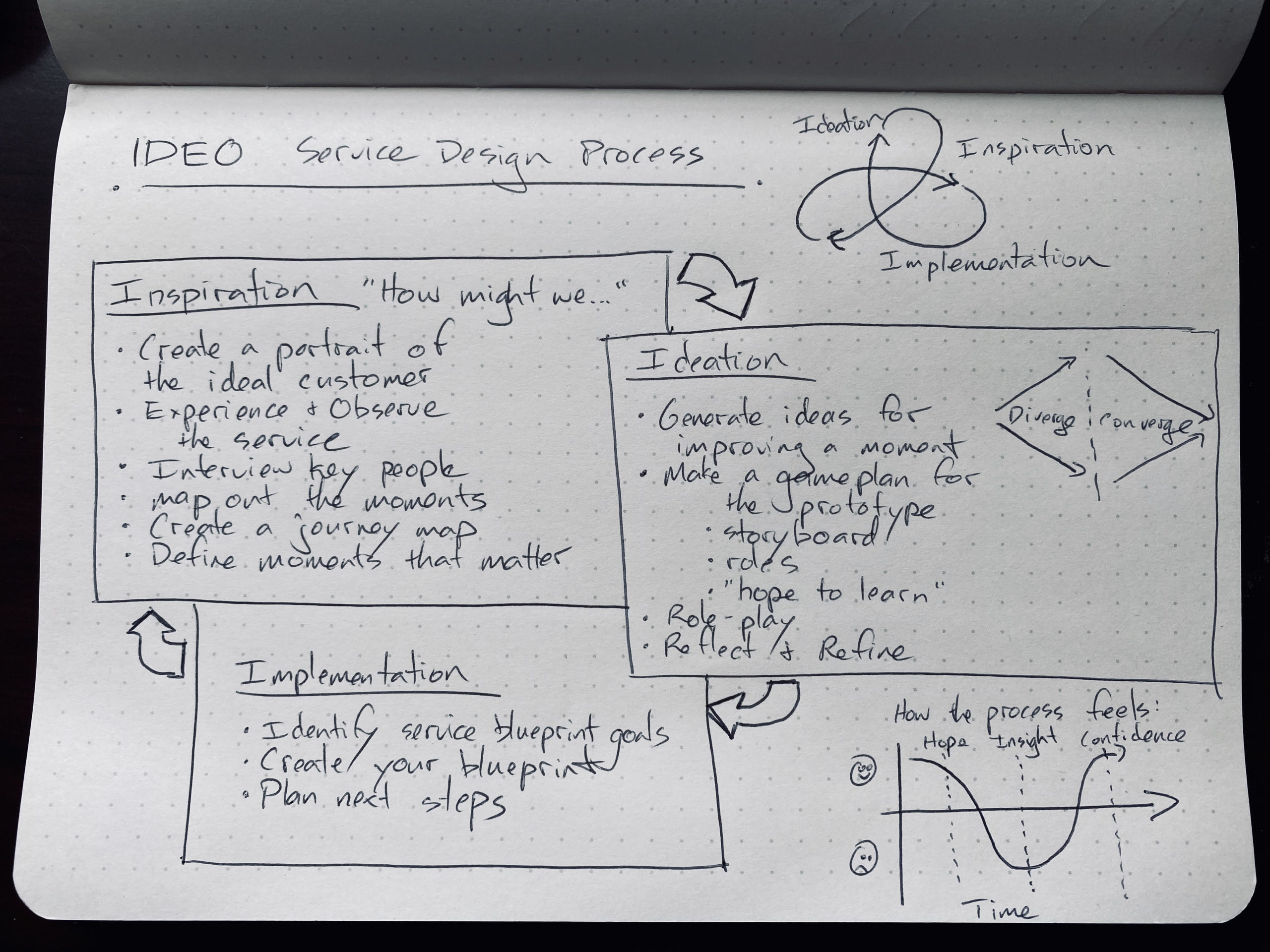
Human Centered Service Design Process
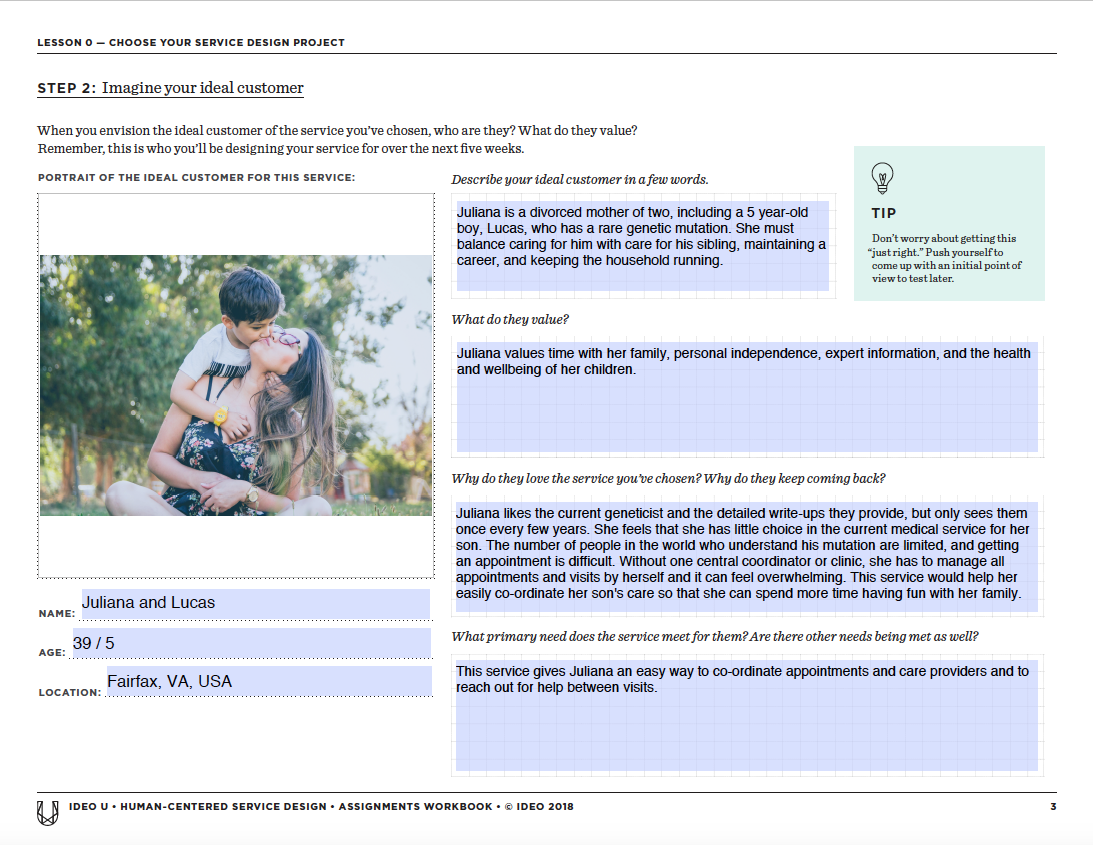
Portrait of the Ideal Customer
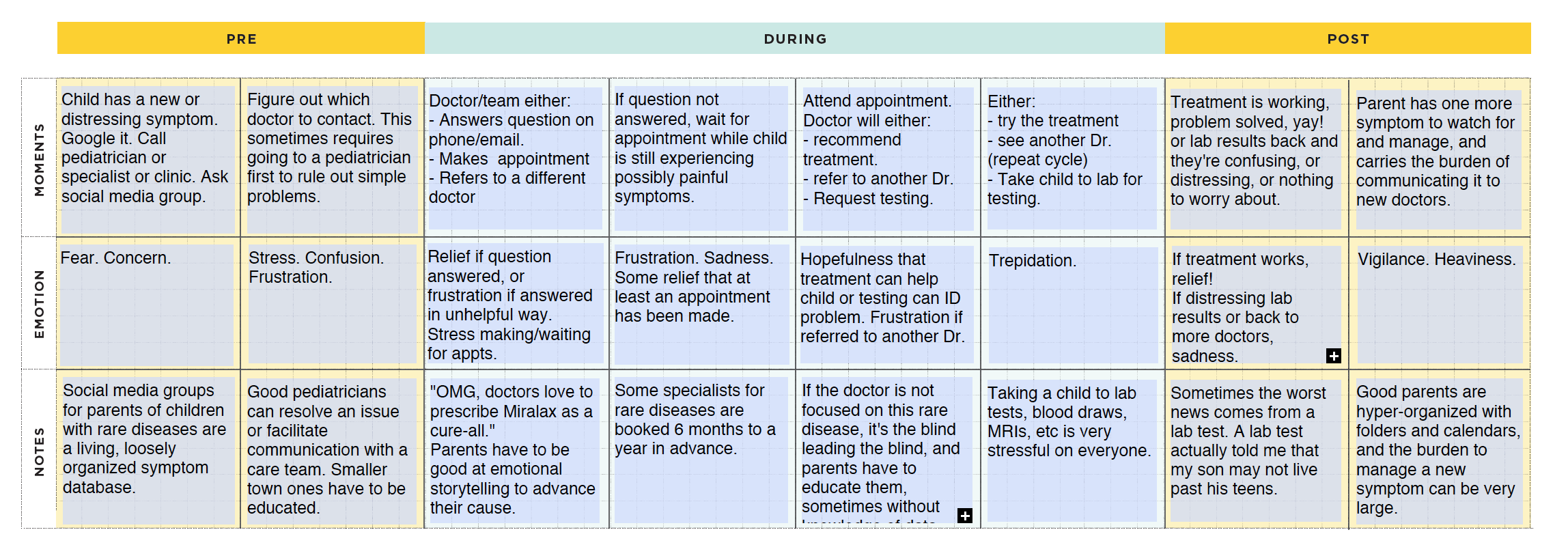
Customer Journey Map
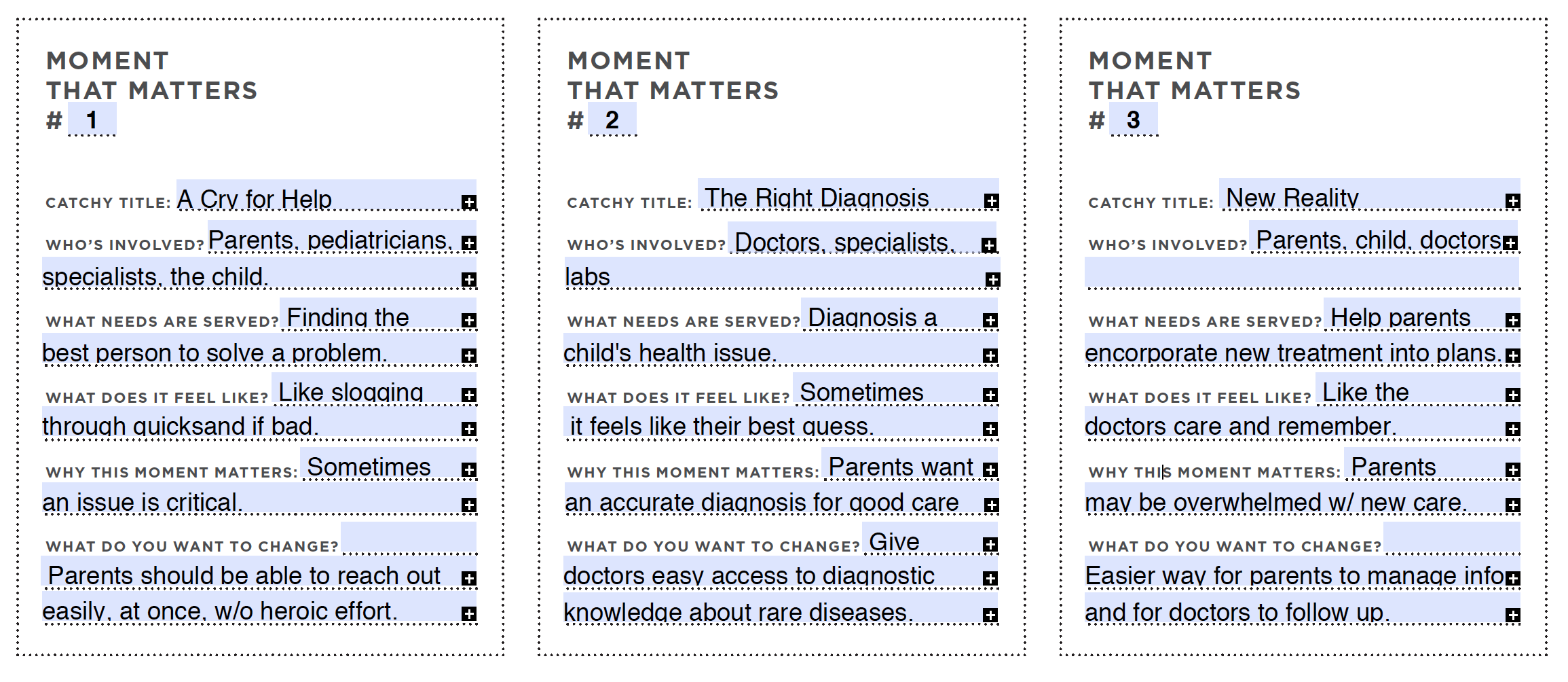
Defining Moments that Matter
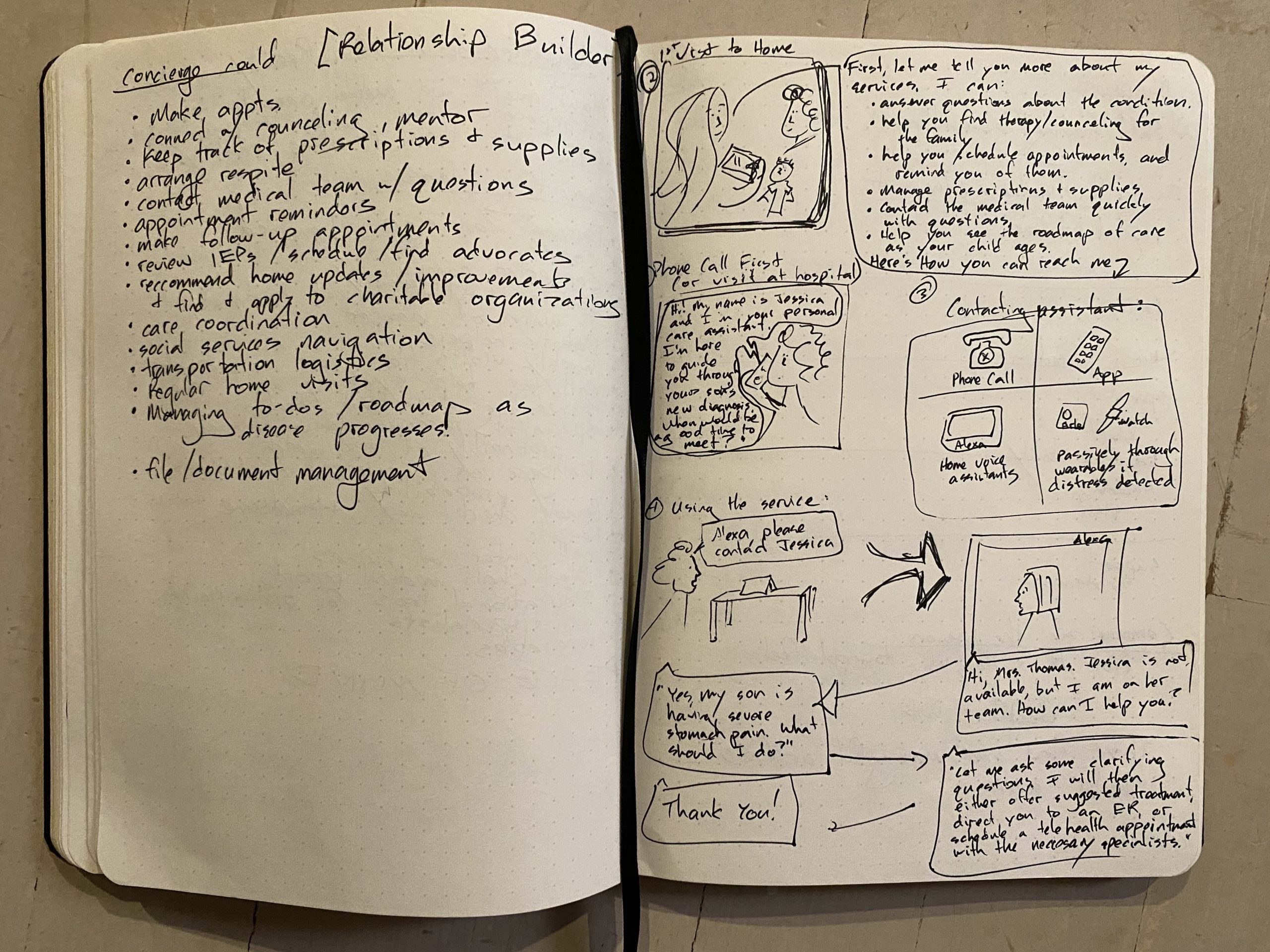
Idea Generation
Sketching the ideas with pictures and words: If we spend several hundred dollars/night at a hotel, we have access to a concierge service. But in the medical world, if we are spending thousands of dollars on care for a medically fragile child, parents are often left to coordinate all of the care themselves and must quickly become experts while also dealing with the grief of diagnosis and their regular life duties.
I feel that a concierge service independent of the medical group and insurance company could help acclimate them to a new reality and then assist with ongoing care.
Role: Parent of Special-Needs Child
Function: Care for the child while juggling the rest of the family’s needs, plus a career, spouse, etc.
Character/Personality: Mama Bear, but also overwhelmed, tired parent.
Role: Personal Care Assistant / Concierge and team
Function: Help the parent manage all aspects of care.
- Answer questions about the condition.
- Help find emotional counseling for parent, siblings, child.
- Connect parent to non-profit organizations, support groups, and mentors.
- Coordinate care with doctors, therapists, educators, specialists.
- Assist with appointment scheduling (including specialist recommendations), reminders, and transportation if needed.
- Manage prescriptions (refills, deliveries), medical equipment procurement and repair, and supplies.
- Contact the medical team quickly with questions and arrange tele-health visits if needed.
- Navigate social services and school IEPs.
- Arrange respite care.
- Monitor wearables, sensors, etc. for signs of distress.
- Be reachable via phone, email, home visits, and an app.
Character/Personality: Mary Poppins, delightfully helpful, soothing
Role: Augmented Intelligence
Function: The brain behind the concierge team.
- Medical records available and transferable via blockchain.
- Diagnostic system that can take inputs from wearables, sensors.
- Has access to databases of peer studies, medical knowledge, to determine via probability if new symptoms are likely to be co-morbid, typical progression.
- Walks concierge team through questioning process with parent to determine best next step.
- Access to databases of qualified professionals who demonstrate proficiency in care of this condition.
- Access to laws, IEP recommendations, social services, and can act as recommendation engine for next step.
- Augmented reality capabilities to show parent care techniques, physical therapy, etc.
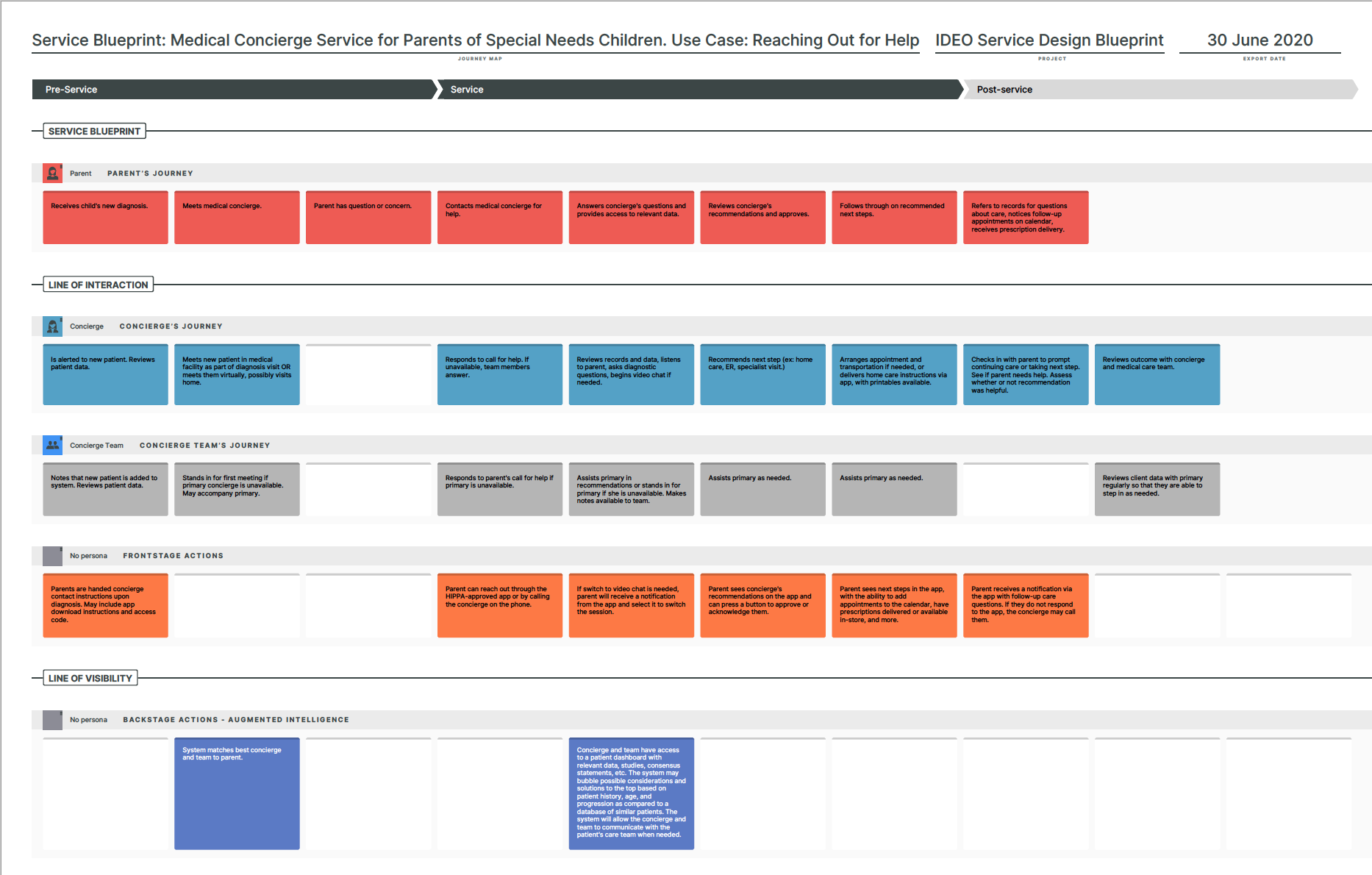
Service Blueprint
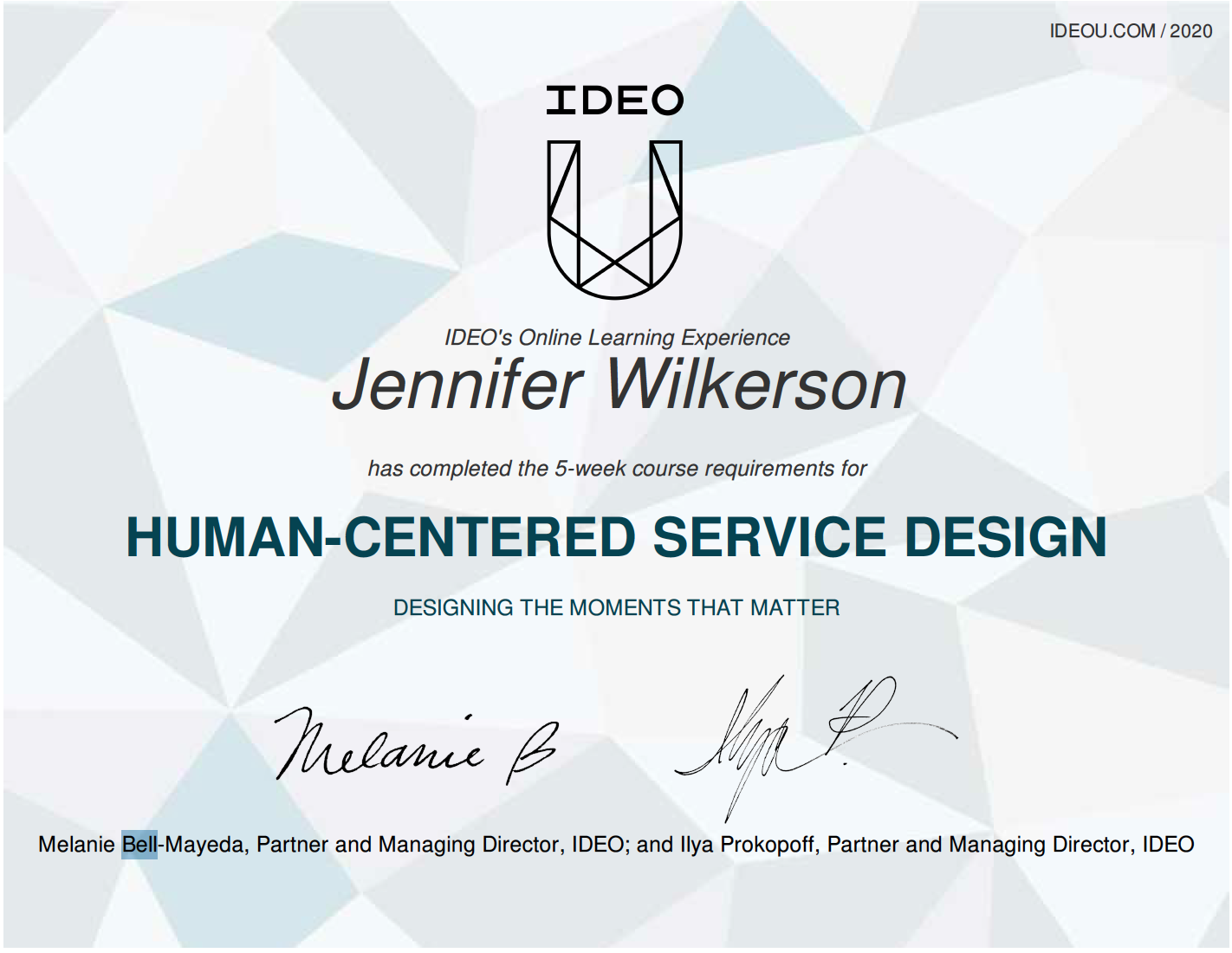
Course Completed
After I completed the course, one of the parents I interviewed was inspired to create a bill to protect the rights of medically fragile children during custody battles.
